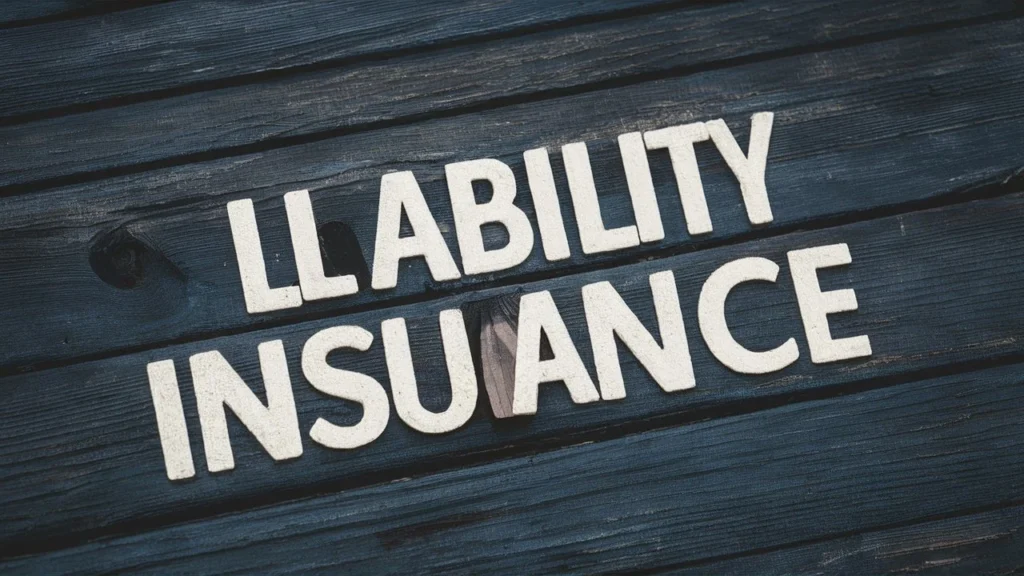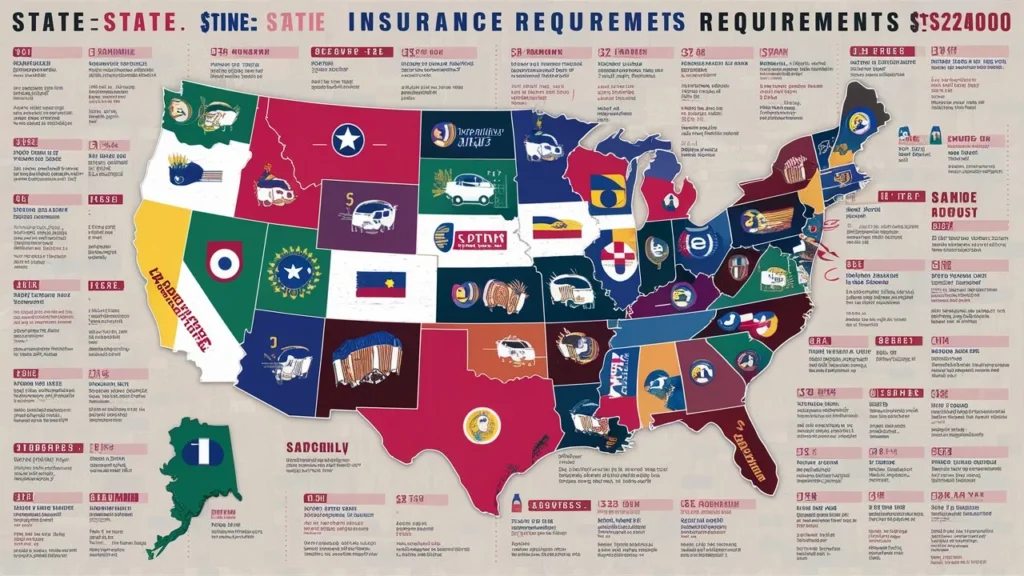Nonemergency medical transportation (NEMT) ensures patients access essential healthcare services. With proper insurance coverage, NEMT providers can mitigate significant risks and liabilities. Essential insurance requirements for NEMT services include:
- Liability Insurance (general and professional)
- Commercial Vehicle Insurance
- Workers’ Compensation Insurance
- Additional Coverages (such as property, cyber liability, etc.)
Failure to maintain adequate NEMT insurance can result in costly legal issues, fines, and even the suspension of operations. This post explores insurance needs, regulations, best practices, and cost management strategies for NEMT providers.
NEMT carriers should carry several kinds of coverage to defend themselves, their personnel, and their customers. The major coverages required encompass liability insurance, business auto coverage, people’s compensation insurance, and doubtless extra policies based on the offerings presented.
Liability Insurance

Liability insurance is crucial for NEMT organizations, as it helps cover expenses in the event of a lawsuit related to:
- Injuries to clients during transportation
- Damages or injuries caused by employee negligence
- Claims of improper care or service
Two Main Types of Liability Policies NEMT Providers Need:
1) General Liability
This covers claims for physical injury, belongings damage, non-public damage like slander, and advertising and marketing damage. Most states mandate minimum coverage limits.
2) Professional Liability
Insurance, also called malpractice insurance, covers claims for negligence, mistakes, or failure to perform services properly. Coverage limits vary, but $1 million in keeping with prevalence is common.
Commercial Auto Insurance

Because NEMT services involve transporting customers, commercial car coverage is necessary. Policies should consist of:
Here’s the content rewritten in table format:
| Coverage Type | Details |
|---|---|
| Commercial Auto Liability | Covers injuries and damages caused by NEMT vehicles |
| Uninsured/Underinsured Motorist | Provides coverage if someone without insurance hits your driver |
| Medical Payments | Covers medical bills for drivers and clients following an accident |
State laws dictate minimum coverage limits for industrial vehicle guidelines. $1 million blended unmarried limits are traditional.
Workers’ Compensation Insurance
If you have employees, workers’ compensation affords protection if they are injured on the job. Benefits cover hospital treatment, rehabilitation, disability, and lost wages. Each kingdom sets policy necessities.
In addition to those number one coverages, some NEMT companies may additionally need different specialized regulations like:
| Coverage Type | Description |
| Property Insurance | Covers company vehicles, equipment, and facilities |
| Cyber Liability | Covers data breaches involving client information |
| Employment Practices Liability | Covers claims of wrongful termination, harassment, and similar issues |
By informing their full insurance wishes, NEMT organizations can reap the proper coverages and boundaries to operate properly and compliantly.
NEMT coverage necessities are governed by complicated country and federal guidelines. Providers should comply with all applicable regulations within the jurisdictions where they perform.
State-Specific Insurance Requirements

Most states have precise coverage mandates for NEMT businesses offering non-emergency transportation. Everyday necessities consist of:
Licensing and Certification
NEMT providers must obtain proper working licenses and certifications from national fitness/transportation businesses. Maintaining minimal coverage coverages is typically a prerequisite.
Minimum Coverage Limits
States dictate the minimum legal responsibility coverage limits NEMT providers have to deliver for industrial automobiles, popular legal responsibility, and employees’ comp regulations. Limits can range drastically between states.
Reporting and Documentation
NEMT businesses may additionally need to document insurance documents annually and report any policy modifications, claims, or lapses in insurance to regulatory bodies.
For example, California calls for NEMT companies to hold $1 million in legal responsibility coverage and $5 million in excess insurance. Vehicles ought to have $1 million mixed single limits for car liability.
Federal Regulations
NEMT providers that transport Medicaid or Medicare patients must additionally observe federal application requirements associated with coverage:
Provider Enrollment
When enrolling as Medicaid or Medicare transport service providers, companies must submit current liability insurance coverage showing that it is above the basic levels stipulated by federal law.
Compliance Standards
Federal rules outline insurance obligations like prompt claims reporting, policy renewal notifications, and continuous coverage.
Fraud, Waste, and Abuse Prevention
NEMT companies have rules that say they cannot make up lies about their insurance coverage and must help during audits and investigations.
Failure to carry proper NEMT
Federal healthcare programs, civil monetary penalties, and potential criminal liability may result in discontinued insurance.
NEMT regulations require providers to navigate the web of state and federal Diligent compliance efforts. To avoid costly violations, providers should review rules and insurance policies regularly.
Providers must understand insurance regulations to operate safely and avoid penalties. By following best practices, they can fulfill all insurance obligations and maintain compliance with NEMT.
Read More: Pelvic Floor Therapy Covered by Insurance
Conducting Regular Risk Assessments Perform

Periodic risk assessments can help you recognize capability liabilities and insurance gaps. You can evaluate your services, car operations, hiring practices, and safety protocols and determine whether your modern-day insurance policies adequately address dangers.
Establish clear policies detailing insurance necessities for NEMT activities. Document methods for obligations like:
| Category | Details |
|---|---|
| Developing Policies and Procedures | Establish clear policies for insurance requirements in NEMT operations, including: |
| – Verifying current insurance documents for all vehicles | |
| – Reporting claims, incidents, or lapses in coverage | |
| – Reviewing insurance renewal terms annually | |
| – Securing adequate coverage for new services/locations | |
| Training and Educating Staff | Provide comprehensive training to ensure staff understand their roles in maintaining insurance compliance, covering: |
| – Proper customer handling and transportation protocols | |
| – Vehicle inspection and maintenance schedules | |
| – Procedures for reporting injuries or potential claims | |
| – Confidentiality policies regarding customer information |
They monitor and Review Coverage.
Regularly assess your coverage regulations and documentation with an experienced broking or criminal counsel. Ensure coverages always meet all regulatory requirements as your operations evolve. Update policies annually before renewals.
Staying Informed About Changes
NEMT regulations and insurance necessities often alternate. Monitor updates from state groups, federal government, and enterprise organizations. Attend conferences and training sessions. Subscribe to applicable courses and newsletters.
By following these first-class practices, NEMT companies can proactively manipulate their compliance obligations rather than risk consequences for lapsed or insufficient insurance coverage.
While maintaining the right coverage coverages is vital for NEMT vendors, handling the related fees is likewise a key consideration. Implementing strategies to govern insurance costs can enhance operational performance and profitability.
Strategies for Cost Containment
NEMT businesses can doubtlessly lessen their insurance rates by focusing on hazard control practices inclusive of:
| Category | Details |
|---|---|
| Risk Management Practices | – Implementing strict driver screening, training, and monitoring programs |
| – Enforcing safety rules, such as prohibiting distracted driving | |
| – Utilizing vehicle tracking systems and telematics data | |
| – Establishing protocols for handling wheelchair loading | |
| Fleet Management and Vehicle Maintenance | – Investing in regular preventative maintenance for all vehicles |
| – Promptly addressing any safety or mechanical issues | |
| – Upgrading to newer vehicle models with advanced safety features | |
| – Optimizing routing and scheduling to reduce overall mileage | |
| Driver Safety Programs | – Requiring drivers to attend defensive driving courses |
| – Monitoring driving records and histories for violations | |
| – Using incentives for drivers with excellent safety records | |
| – Disciplining drivers who fail to comply with safety protocols |
Evaluating and Selecting Providers
In addition to energetic hazard control, carefully vetting capability insurance carriers is crucial for value management:
Understanding Policy Terms and Exclusions
Thoroughly evaluate all coverage phrases, conditions, deductibles, and exclusions with an experienced dealer or legal professional. Identify ability insurance gaps.
Comparing Quotes and Options
Solicit rates from more than one coverage company for equivalent coverage provisions. Analyze and evaluate charges, exclusions, and claims tactics.
Negotiating Rates and Discounts
Leverage your company’s threat management efforts and claims records while negotiating charges. Explore reductions for bundling more than one rule.
By deploying a complete fee management method focused on prevention and strategic provider choice, NEMT operators can maintain less expensive coverage while maintaining compliance.
Leveraging dependable assets and references is essential when navigating the complicated global NEMT insurance regulations and guidelines. NEMT providers can flip to the following sources for guidance:
State and Federal Regulatory Agencies
Each country has agencies overseeing NEMT provider licensing, certification, and insurance mandates, which include:
· Departments of Health
· Departments of Transportation
· Medicaid/Medicare Program Offices
These groups post policies, steering documents, and paperwork detailing particular coverage responsibilities. Many have websites, helplines, and a workforce available to answer compliance questions.
At the federal level, critical assets consist of:
· Centers for Medicare & Medicaid Services (CMS)
· US Department of Transportation (DOT)
· Federal Motor Carrier Safety Administration (FMCSA)
CMS gives toolkits for NEMT companies enrolling in federal healthcare packages. DOT and FMCSA adjust business vehicle insurance requirements.
Industry Associations and Organizations
Trade groups for NEMT and passenger transit providers offer member assets on insurance matters, which include:
• Model rules and settlement templates
• Compliance checklists and exceptional exercise courses
• Continuing schooling publications
• Legislative/regulatory updates
Examples
Including the National Association of Medicaid Transportation Providers and the Non-emergency Medical Transportation Accreditation Commission.
Professional Liability Insurers and Brokers Experienced coverage brokers and providers that specialize in NEMT operations can provide priceless understanding, inclusive of:
• Assessing your unique hazard exposures
• Explaining policy phrases and provisions
• Projecting price estimates for various coverage levels
• Risk control consulting services.
By leveraging these resources, NEMT providers can stay well-informed and establish a comprehensive insurance and compliance program
The Internet provides a vast array of online resources from government, nonprofit, and private sector sources. These resources include regulatory guidance documents and interpretations, continuing education webinars and videos, industry publications and blogs, and model NEMT policies and templates.
These materials can serve as valuable tools for staying up-to-date with industry standards and ensuring compliance with regulations in the non-emergency medical transportation (NEMT) sector.
Non-emergency scientific transportation (NEMT) providers must retain proper coverage insurance. Failing to conform to applicable rules can result in pricey consequences, felony responsibility exposure, or even the suspension of operations.
NEMT Corporations Require, Consisting of:
-Liability insurance (popular and professional liability)
-Commercial vehicle insurance –
Workers’ reimbursement coverage
-Potential additional regulations like cyber legal responsibility or employment practices liability
We looked at the net of national and federal rules governing NEMT insurance duties. Providers should ensure they meet all licensing, certification, minimum insurance limits, and reporting regulations at the state degree. Following best practices is critical for effective insurance compliance management, such as:
• Conducting periodic risk exams
• Developing clear regulations and processes
• Properly training group of workers on insurance protocols
• Continually monitoring and updating coverage
• Staying informed of regulatory changes
While coverage is a tremendous price, we covered strategies to help manipulate expenses through diligent threat management efforts and comparing policy costs and provider alternatives.
Conclusion
Finally, NEMT businesses have access to several valuable resources and references. State/federal groups, enterprise businesses, insurance agents, and online resources can offer guidance on guidelines, coverages, and compliance best practices.
By prioritizing insurance and proactively dealing with compliance, NEMT carriers can perform with a bit of luck while defending their businesses, personnel, and clients from undue dangers. Neglecting this critical duty can prove devastating.
Frequently Asked Questions
What happens if a NEMT provider lets their insurance coverage lapse?
Even briefly, allowing insurance rules to lapse could have extreme results for NEMT vendors. They may additionally face fines, license suspensions or revocations, termination from federal healthcare packages, and capability civil/crook legal responsibility. Maintaining continuous insurance is essential.
How often should NEMT companies review their insurance policies?
It’s recommended that NEMT vendors thoroughly evaluate and reconsider their coverage at least annually earlier than coverage renewal intervals. However, mid-time period coverage audits are also helpful whenever operations drastically alternate.
Do volunteer drivers for NEMT services need special insurance?
Yes, the use of volunteer drivers creates extra insurance responsibilities. NEMT companies must upload hired/non-owned auto liability coverage to their industrial policies. Volunteers need to carry good enough private car coverage properly.
What insurance is needed if we transport patients across state lines?
When working in multiple states, NEMT groups must study and observe coverage rules in every jurisdiction. Many states have unique licensing, minimal coverage, and reporting mandates that observe to move companies passing through.
Can NEMT providers be held liable for passengers’ private health information?
Potentially, sure. That’s why cyber liability insurance is suggested for NEMT businesses with access to clients’ medical statistics or other sensitive facts during transportation services. It covers costs associated with data breaches.
Who are the largest NEMT providers?
Some of the large-emergency medical transportation (NEMT) providers in the United States include MTM, Inc., LogistiCare (now called ModivCare), Access2Care, and Southeastern. These companies manage large contracts with government programs, such as Medicaid, to ensure patient transportation to medical appointments.
What is another word for emergency medical transportation?
Another term for non-emergency medical transportation is medical transportation services or patient transportation services. In some contexts, it’s also referred to as healthcare transportation.
What is non-emergency medical transportation in PA?
In Pennsylvania (PAnon-emergency medical transportation (NEMT) refers to transport services provided to Medicaid recipients who need to get to medical appointments or treatments but do not have access to other means of transportation. The Pennsylvania Medical Assistance Transportation Program (MATP) oversees NEMT services in the state.
What non-emergency medical transportation in NY?
In New York, (NYnon-emergency medical transportation (NEMT) services are provided to eligible Medicaid recipients who need assistance getting to medical appointments. The New York State Department of Health manages the NEMT program, often working with transportation management companies like ModivCare to coordinate these services.

Justin Taylor is the creative force behind Insuranted.com, a premier destination for insightful and trustworthy insurance information. With a dedication to demystifying insurance complexities, Justin strives to equip readers with the knowledge they need to make smart, informed decisions.










